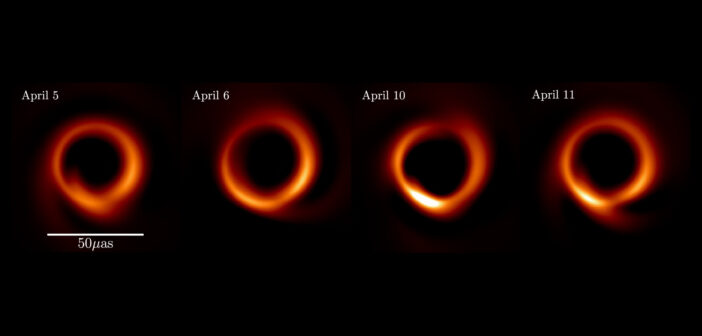Editor’s Note: In these last two weeks of 2023, we’ll be looking at a few selections that we haven’t yet discussed on AAS Nova from among the most-downloaded articles published in AAS journals this year. The usual posting schedule will resume in January.
The Image of the M87 Black Hole Reconstructed with PRIMO
Published April 2023
Main takeaway:

Comparison of a black hole image released by the Event Horizon Telescope collaboration (left) with the results from PRIMO (middle and right). [Medeiros et al. 2023]
Why it’s interesting:
In April 2019, the Event Horizon Telescope collaboration released the first images of a black hole, constructed from data taken at observatories across the planet. The images allowed researchers to study the properties of the black hole and test our theories of gravity. While these first black hole images were a huge triumph, the work didn’t stop there: researchers continued to develop new algorithms to be applied to the complex interferometric data from the Event Horizon Telescope. And while initial analyses of the Event Horizon Telescope data were careful to be model agnostic — that is, not assuming anything about the black hole’s shape or properties — the excellent agreement between the images and our theory-based expectations allowed researchers to adjust their analysis methods to produce more precise results.
What’s special about PRIMO:
The Event Horizon Telescope consists of telescopes across multiple continents, but even with these powerful observatories working in concert, the data set is still considered “sparse,” interferometrically speaking. This presents a challenge for modelers that PRIMO, which refers to principal-component interferometric modeling, meets by filling in the gaps with simulations. PRIMO is trained on a database of more than 30,000 simulated images of accreting supermassive black holes, and this specialized training set enables the creation of images with resolution up to the nominal resolution of the Event Horizon Telescope.
Citation
Lia Medeiros et al 2023 ApJL 947 L7. doi:10.3847/2041-8213/acc32d

